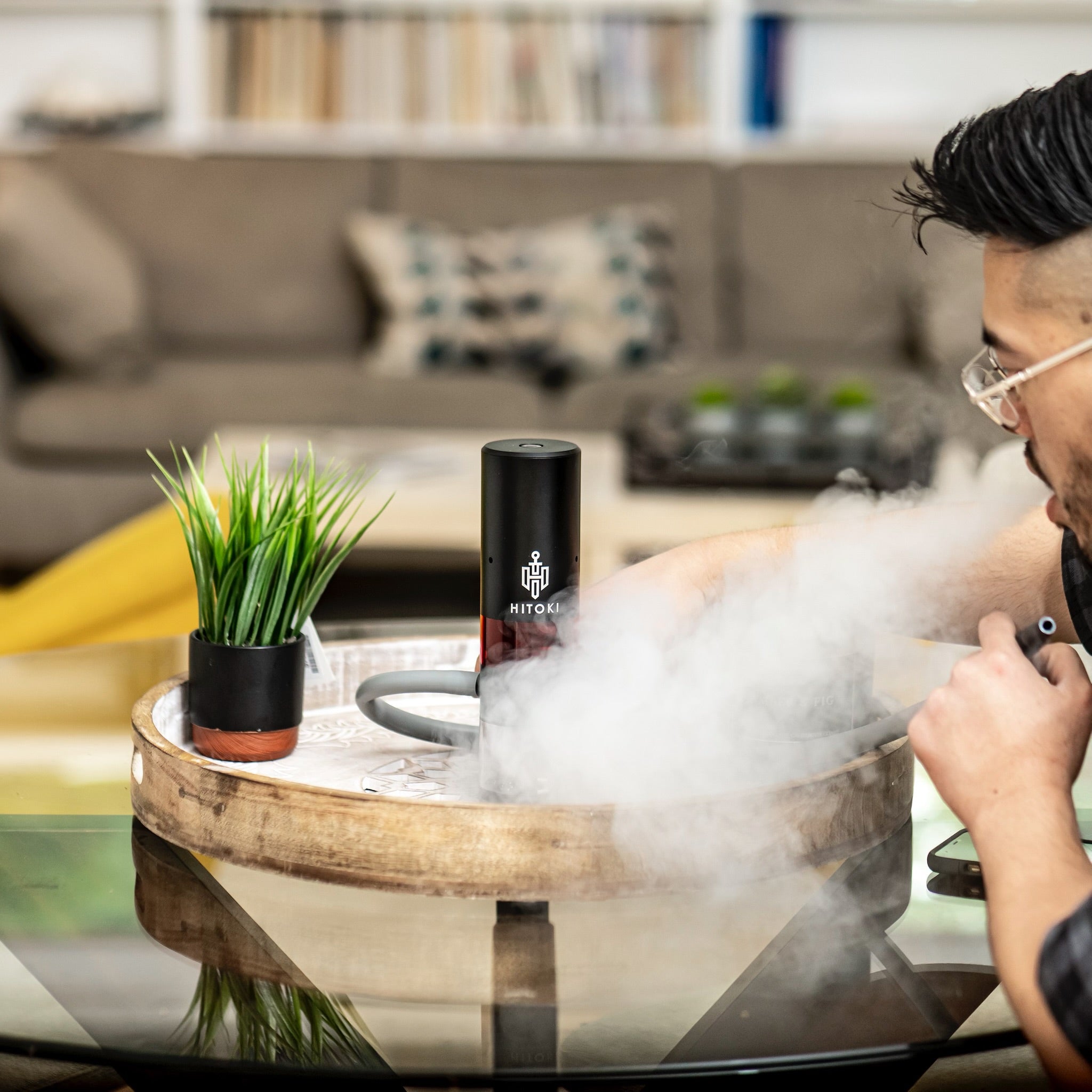A Deep Dive into the World of Dry Herb Vaporizers
Dry herb vaping has gained considerable popularity in recent years, as the technology has advanced enough to sustain a whole new method of consuming dry flowers, wax, and concentrates. It has birthed a subculture of vaping hobbyists and enthusiasts. Nowadays, the dry herb vaporizer has become one of the preferred methods of consumption among dry herb users.

For those who are looking to switch from smoking joints and blunts to a vaporizer smoking device, the process can be confusing and quite overwhelming due to the sheer number of brands, the multiple styles and models, as well as the different approaches to heating the flower. For a newbie, the task of finding the best vaporizing machine or device that best suits their preference or budget is indeed a tall task, to be honest.
So before we go deeper into the different vaping devices for smoking dry herbs, how they work, and how much they cost, it’s important to note that dry herb vaping is not for everybody. If you’re already settled in and satisfied with your joints, blunts, and the occasional smoking pipes and bongs, then dry herb vaping may not be for you. However, if you find consuming dry flowers just too harsh or if it’s just not your scene, then read on and perhaps you might find the electric smoking pipe more to your liking.

What is a dry herb vaporizer?
So what is a dry herb vaporizer? Well, a dry herb vaporizer is an electronic device that allows you to consume your dry flowers, wax, and concentrates by vaporizing them instead of combustion, i.e. subjecting them to an open flame to breathe in the smoke like the classic bongs, pipes, and joints. With vaping, heat still plays a significant role in releasing the cannabinoids or the THC in the flower, but the device does this in one of two ways: through conduction or convection heating instead of combustion.

You see, there are two main types of dry herb vaporizers available in the market: conduction vaporizers and convection vaporizers. By their names, it’s quite obvious that they follow different principles when it comes to heating the flowers, even though the result is pretty much the same, vapor that is infused with THC from the dry flower, wax, or oil.
So what does a vaporizer do and how does a dry herb vaporizer work?
Conduction heating, in vaporizers, refers to a heating process that requires direct contact with some type of heating element. In the case of dry herbs, conduction vaporizers work by heating the dried flower through direct contact to release the cannabinoids in vapor form. While the conduction method is indeed very effective, there is the possibility that you can burn the flower. In this regard, users must learn how to tell when dry herb is done in a vaporizer device. When it comes to cost, vaping devices that use the conduction heating method tend to be cheaper and more portable.
Convection heating, on the other hand, is a process that utilizes heat transfer instead of the direct heat approach. You can think of this method as cooking meat in an oven or air fryer, instead of a frying pan or a cast iron skillet. Convection vaporizers work by heating the air and forcing it through and around the dry herb to release the THC. These types of devices tend to be more costly than their conduction counterparts, but they often provide better flavor quality and vapor due to the even heating that they can deliver.

One of the most common devices that use convection heating is the desktop vaporizer, although there are portable ones that do use this heating method. However, conduction heating is more common in portable devices, while convection is the popular means of heating in the best desktop vaporizer available in the market.
How does a dry herb vaporizer work?
To understand how to use a dry herb vaporizer, we must first learn about the different parts of this type of device. A standard dry herb vaporizer has three main parts: the battery, the chamber, and the mouthpiece. For desktop vaporizers, the battery doesn’t apply since they are typically tethered to a power outlet. For potable vaporizers, on the other hand, the battery is a crucial part.
This is arguably one of the catalysts that pushed vaping to the forefront. The technology behind the design and reliability of battery cells has greatly advanced in recent years. Modern vaporizers are powered by high-drain rechargeable lithium-ion cells. These types of batteries are more than capable of delivering the much-needed power that vaping devices need to reach the required temperatures to vaporize dry herbs.
The lithium-ion cells in vape devices typically come in a couple of sizes: 18350s and 18650s. And portable dry herb vaporizers are either powered by the smaller 18350 or the bigger 18650. There are vape devices that have cells that are built into the device, which means that they are fixed and cannot be removed, but there are also dry herb vaporizers that have removable/replaceable batteries. With the built-in option, you can charge the cells directly through the vape device. On the other hand, removable cells can either be charged using a dedicated charger bay or through the device itself.
Now, the chamber is the part of the vaporizer where you will place your ground-up dry herb. Older models typically use stainless steel as the primary material for the chamber, but the majority of modern devices today use some type of ceramic material since they heat up faster and are more effective at retaining heat. Ceramic chambers are also popular because they don’t affect the flavor of the herb and they can keep the vapor clean and pure.
Some vape devices have quartz chambers, instead of stainless steel or ceramic. In fact, the use of quartz chambers is a fast-growing trend among portable dry herb, wax, and oil vaporizers. This is because quartz chambers are much more efficient at retaining the natural flavors of the flower or concentrates, although they take much longer to heat up and reach the appropriate temperatures.
The third and final key part of a standard dry herb vaporizer is the mouthpiece. This is obviously where you draw the vapor that is produced in the chamber into your pie hole. Now, mouthpieces can vary greatly between each device, make, or model. It’s important that when choosing a vaporizer, you have to take into account the shape, design, and material used on the mouthpiece. Mouthpieces with the tapered or cylindrical design tend to be the most comfortable, but it’s the length that you have to consider since longer mouthpieces can make the draw a little more difficult for some people.
Aside from cylindrical mouthpieces, there are also those that use a flat design. Flat mouthpieces allow for an easier draw compared to the longer cylindrical ones, but they can be less comfortable in comparison. Regardless of your preferred shape, when it comes to the material, if you want maximum flavor, you should consider investing in a portable vape device with a glass mouthpiece, instead of hard rubbers or silicone pieces. Some dry herb vaporizers have silicon or hard rubber material for their stock mouthpieces, but they might include an alternative mouthpiece made of glass for free or at cost.
How long do the chamber and its effects last?
When it comes to dry herb vaping, each load in the chamber can last for more than one session, depending on how many people are sharing the load. For single users, a single chamber of herbs can last for more than a single session. Most dry herb vaporizers in the market have five to 10 minutes worth of session time, depending on the temperature setting and the amount of herb that is packed in the chamber.
So how to tell when dry herb is done in a vaporizer? You will know when the load is done once it no longer delivers the desired effects; i.e., the flavor and vapor. The material in the chamber will also look dried up, way drier than what a typically dry herb looks like. It will also seem almost tasteless and look discolored.
How long does the effect last with dry herb vaping? Anecdotal evidence suggests that the effects of a single session can last anywhere between two and four hours on average. However, such figures may vary between individuals. In fact, a 2017 scientific study came up with results that suggest the average onset times and durations of the peak highs from dry herb vaping only last around 20 to 30 minutes, while the total effect can last up to roughly three hours.
So are dry herb vaporizers expensive?
The answer is not as cut and dry as most people think. Sure, some vaporizers are expensive in relation to other devices. However, there is a good reason why most people are attracted to dry herb vaporizers than an electric dab rig or a laser bong. The introductory prices for a lot of the dry herb vape devices in the market are more affordable and well-suited for individuals who are looking to get their first dry herb vape.






Share:
What Are The Parts of a Vape?
Women and Cannabis, Past and Present: A History of the Women in the Cannabis Industry